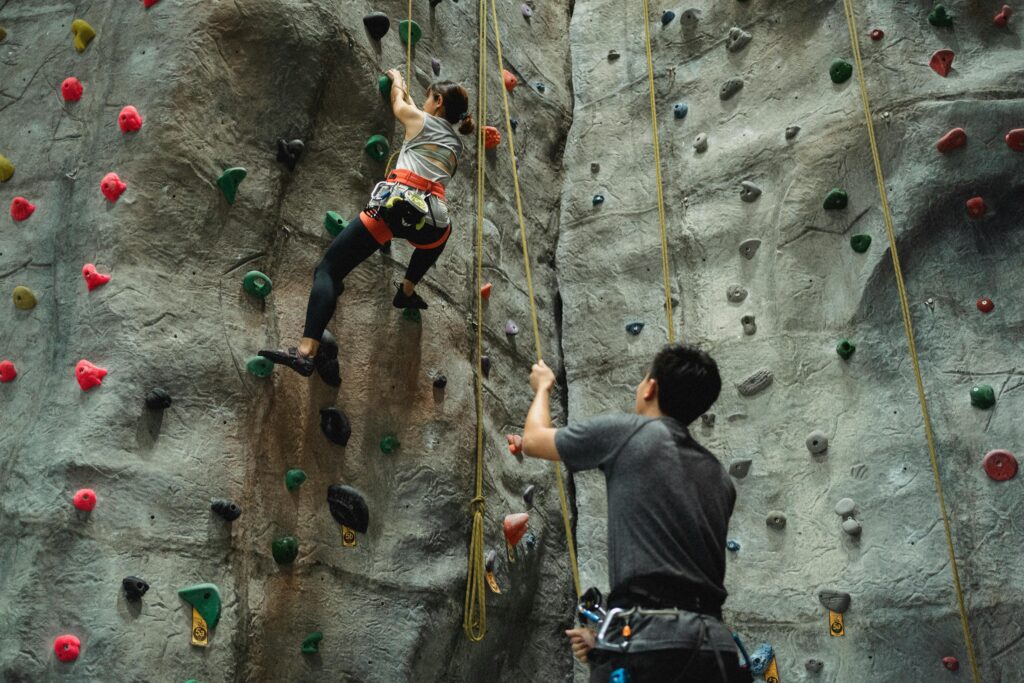Extreme sports offer exciting experiences that thrill participants and give them an adrenaline boost. These sports, which include skydiving, rock climbing, and snowboarding, challenge individuals to push beyond their normal limits. Adventurers are drawn to these high-energy endeavors, eager to experience the intense feelings of freedom and exhilaration that come with them. However, engaging in extreme sports is not without its dangers. Each of these activities carries significant risks, and injuries or accidents can occur without warning.
For instance, the rush of jumping out of an airplane while skydiving comes with the challenge of mastering parachute control. Similarly, rock climbing offers breathtaking views and the satisfaction of conquering heights, but it also requires careful attention to equipment and safety techniques. Snowboarding can be incredibly fun as riders carve down snowy slopes, yet falls and collisions can lead to serious injuries.
Recognizing the potential hazards, it is essential for those who participate in extreme sports to prioritize safety. This article will outline crucial safety tips specifically designed for extreme sports enthusiasts. By following these guidelines, adventurers can enjoy the thrill of their chosen sports while taking necessary precautions to reduce the risks involved. This approach not only enhances the overall experience but also ensures that participants can continue to pursue their passions with greater confidence and security.
Understanding the Risks
Understanding the different risks linked to outdoor activities is crucial for staying safe during these adventures. Physical risks are a key concern, as they include injuries that can happen from falls, collisions, or other accidents that could lead to serious harm or even death. Whether it’s climbing a steep rock, hiking on a rough trail, or cycling on a winding road, the chance of an unexpected fall or running into obstacles like loose stones or wet rocks can create dangerous situations.
Environmental risks are equally important to think about. The outdoors can be unpredictable, with weather changing quickly. A sunny day can quickly turn into a storm, bringing heavy rain, strong winds, or lightning, all of which can be dangerous. Difficult terrains, like steep hills or slippery paths, may also increase the chance of accidents. Additionally, there is the risk of encountering wildlife, from insects to larger animals. These encounters can be surprising or even dangerous, and not being ready for them can turn a fun outing into a risky one.

Psychological risks are another important factor in outdoor activities. People may feel fear or anxiety when faced with tough paths or new challenges, which can affect their judgment. Some thrill-seekers might crave adrenaline, leading them to take unnecessary risks that threaten their safety. This desire for excitement can cloud their decision-making, resulting in choices that endanger themselves and others.
Being aware of these different risks is essential for enjoying outdoor experiences safely. By considering these potential dangers, individuals can make smart choices that focus on their safety and that of their companions. Knowing about the various risks is the first step to ensuring that outdoor adventures are enjoyable and safe, allowing everyone to appreciate the beauty of nature without facing avoidable dangers.
Essential Safety Tips
Physical Preparation:
Physical preparation is a fundamental aspect of achieving success in any sport or physical activity. Maintaining fitness and conditioning is critical as it contributes to building endurance, strength, and flexibility. These attributes are essential for reaching peak performance levels whether competing in a sport or engaging in recreational activities. To enhance performance, regular training sessions should focus on skill development. This includes practicing the specific techniques and strategies that are unique to each sport, allowing athletes to refine their abilities and adapt to various challenges they may encounter during competitions.
In addition to physical training, regular medical check-ups play an important role in an athlete’s overall health. These check-ups help to monitor physical well-being, identify any potential health issues, and prevent injuries before they occur. Early detection of health concerns can lead to timely interventions, which are crucial for maintaining an active lifestyle and ensuring that athletes can continue participating in their chosen sports.

Equipment and Gear:
Using high-quality and well-maintained equipment is essential for ensuring safety and achieving optimal performance in any activity, whether it be sports, outdoor adventures, or workplace tasks. Proper clothing and protective gear are more than just accessories; they serve vital functions in keeping you safe from injuries and hazards. Additionally, these items can significantly enhance your overall comfort and efficiency while you engage in your chosen activity.
It is important to understand that regular inspection and maintenance of your gear is necessary to ensure that everything is functioning correctly. By routinely checking your equipment, you help to identify any issues that may arise, which can prevent accidents or equipment failures. This proactive approach to maintenance not only keeps you safe but also ensures that you are always prepared for whatever challenges may come your way.

When inspecting your gear, pay close attention to signs of wear and tear. This can include frayed straps, worn-out soles, or any cracks and dents in protective equipment. If you notice any damaged items, it is crucial to replace them without delay. By doing so, you minimize the risk of accidents and ensure that you remain protected during your activities. Staying vigilant about the condition of your gear is key to maintaining both safety and performance.
Environmental Awareness:
Environmental awareness is a vital aspect of our lives that requires us to pay attention to weather conditions and forecasts. By understanding what the weather will be like, we can ensure our safety and make better choices regarding our activities. For instance, knowing when it will rain or be extremely hot can help us decide whether to go for a hike, have a picnic, or participate in other outdoor events. When we are mindful of the weather, we can pick the best times and places to enjoy nature while reducing any negative effects we might have on it.
In addition to being aware of weather patterns, it is essential to respect the environment and wildlife around us. This means following local rules and regulations designed to protect natural spaces and the creatures living there. For example, staying on marked trails helps preserve the habitat of plants and animals. Moreover, we should always clean up after ourselves, ensuring that parks, beaches, and other outdoor areas remain pristine for everyone to enjoy. This commitment to keeping nature clean is not just good practice; it also reflects a deeper understanding of our role in the ecosystem.
Our thoughtful approach to interacting with the environment contributes to a healthier planet. When we take care of nature, we help support the diverse ecosystems that sustain wildlife and provide us with clean air and water. By protecting these natural resources, we ensure that future generations will have the same opportunity to experience and enjoy the beauty of the outdoors that we do today. Ultimately, our awareness and actions today play a significant role in shaping a sustainable future for both our planet and the many species that inhabit it.
Risk Assessment and Management:
Risk assessment and management consist of several important steps designed to ensure safety in various environments and tasks. The first step involves identifying potential hazards that may exist in the surroundings or within the specific task being performed. These hazards can include a wide range of dangers, from physical risks, such as slippery floors or sharp tools, to health risks, such as exposure to harmful chemicals or ergonomic issues. Recognizing these dangers is essential for preventing accidents.
Once hazards are identified, the next step is to develop a comprehensive safety plan that details the necessary actions to address these threats effectively. This safety plan should specify the appropriate safety equipment needed to protect individuals from harm, which may include items such as helmets, goggles, gloves, and other personal protective gear. Additionally, the plan should outline specific techniques and practices designed to minimize the risk of injury. For instance, it may recommend the correct methods for lifting heavy objects, maintaining proper posture, and ensuring that workspaces are organized and free from clutter.
The final step in risk assessment and management is to recognize and understand personal limits. This understanding is crucial, as it helps individuals know when they need to ask for assistance or take breaks to avoid fatigue. Being aware of one’s own physical and mental capabilities can play a significant role in preventing potential accidents and injuries. Overall, following these steps—identifying hazards, creating a safety plan, and knowing personal limits—contributes greatly to maintaining a safe working environment.
Mental Preparation:
Mental preparation stands as a crucial element in achieving success in any endeavor. One effective method for enhancing mental readiness is the practice of mindfulness. This approach encourages individuals to remain present in the moment, which helps to maintain focus and fosters a sense of calm. By engaging in mindfulness, people can significantly diminish the distractions that arise from daily life, enabling them to better concentrate on their tasks and ambitions.
In addition to mindfulness, effectively managing feelings of fear and anxiety is equally vital. Techniques such as deep breathing exercises can provide immediate relief by promoting relaxation and reducing tension. Visualization is another powerful tool; imagining a successful outcome can create a positive mindset and help in handling stressful situations more positively. These strategies can transform how an individual responds to challenges and pressures.

However, for those who find that worry and anxiety become overwhelming, reaching out for professional support is an important step. Professionals can offer guidance, strategies, and coping mechanisms that are specifically tailored to meet individual needs. Utilizing these resources can significantly enhance one’s ability to deal with stress.
Taking proactive steps in mental preparation, such as incorporating mindfulness practices, learning to manage anxiety effectively, and seeking professional help when necessary, can lead to improved performance. Ultimately, these actions contribute to a clearer and more focused mindset, allowing individuals to navigate their careers and personal lives with greater confidence and success.
Community and Support
Joining clubs and communities offers an excellent opportunity for individuals to connect and bond with others who share similar passions and interests. These groups often bring together people who have a common goal or hobby, allowing them to engage in meaningful interactions. Learning from experienced athletes in these settings can be particularly beneficial. They possess a wealth of knowledge about various techniques and strategies that can significantly boost performance. By observing their methods and asking questions, less experienced members can gain insights that help them improve.
Additionally, sharing personal experiences among members serves to strengthen relationships and build a sense of camaraderie. This environment fosters support and encouragement, which can motivate everyone involved to strive for improvement and personal growth. The collective journey often enhances motivation and resilience, making it easier for individuals to pursue their goals.

For those looking to advance their skills further, seeking professional guidance is essential. This may include hiring personal trainers, signing up for workshops, or taking lessons from skilled instructors. Professional guidance offers tailored advice that can address specific weaknesses and strengths, leading to more structured progress.
Moreover, it is crucial for athletes to consult with medical professionals on health-related matters. Regular check-ups and discussions about training practices ensure that athletes maintain their health and recover safely after injuries. Making informed decisions about training routines and overall well-being is vital for long-term success in any sport. When all these elements come together, they create a robust support network. Such a network not only enhances athletic skills but also plays a significant role in building self-confidence. With the encouragement of peers, the knowledge from experienced mentors, and the guidance of professionals, athletes can thrive in their endeavors, both physically and mentally.
Conclusion
Extreme sports are an experience that thrills the heart and soars the soul. These sports test not just physical prowess, but also mental toughness and courage. But, this thrill also comes with risks. So, whenever you go to enjoy an extreme sport, keep safety paramount.
Assess your physical ability correctly and take on challenges that are appropriate for your level. Use high-quality equipment and check it regularly. Pay close attention to weather conditions and local regulations. Learn from experienced people and follow their advice. And most importantly, know your limits and don’t push them. Remember, extreme sports are about having fun, not risking your life. Be safe, play responsibly, and enjoy every moment.





One thought on “Top Extreme Sports Safety Tips to Follow”
Comments are closed.